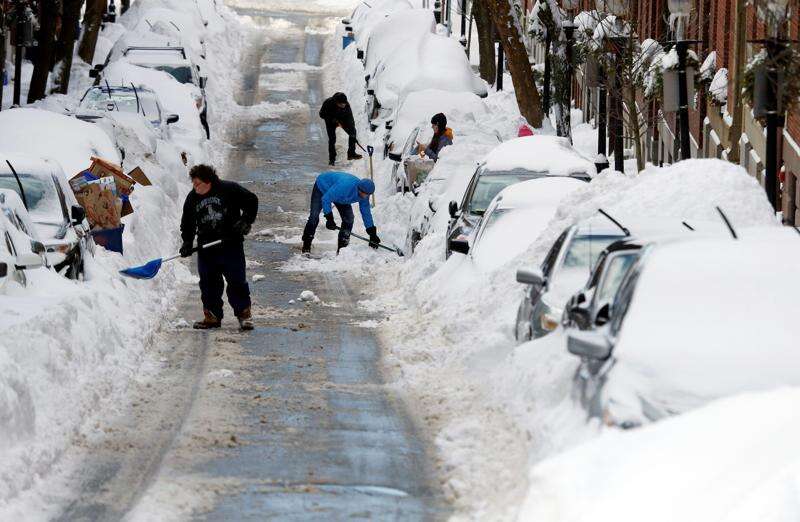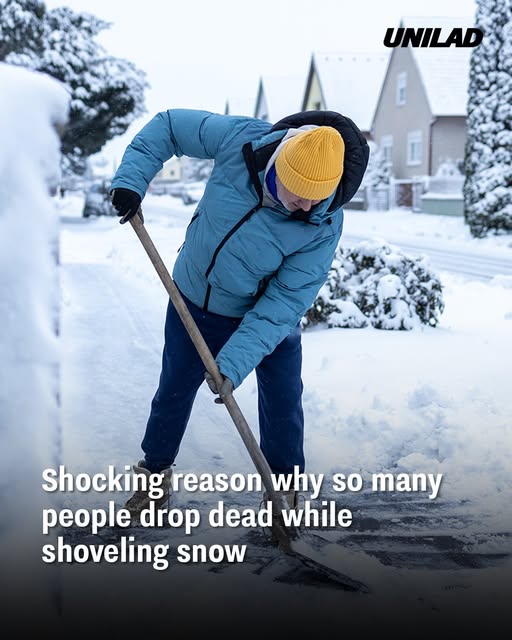Many people see snow shoveling as a simple winter chore but for some, it can actually be life-threatening. The combination of cold weather and physical stress creates a “perfect storm” for the heart. Under the right (or wrong) conditions, lifting and throwing heavy snow can push the cardiovascular system into danger.
Why Cold Weather Is Such a Threat
Cold air doesn’t just feel uncomfortable — it makes your heart work harder. When you’re exposed to freezing temperatures, blood vessels constrict, raising blood pressure. At the same time, your heart must pump more forcefully to move blood through these narrowed vessels. This extra strain, combined with the intense effort of shoveling, overloads the cardiovascular system.

Strain From Physical Exertion
Shoveling snow requires a lot of effort, and not in a gentle way. The motion relies heavily on arm muscles, unlike many exercises that engage the legs. This upper‑body exertion is especially demanding for the heart because it increases blood pressure dramatically. In addition, when lifting heavy loads of snow, people often unintentionally hold their breath (a Valsalva-like maneuver), which spikes pressure even further.
Isometric Muscle Work Makes It Worse
Unlike walking or running, shoveling often involves isometric activity — muscles working hard without much movement. During this kind of work, blood pressure goes up because the muscles are tightly contracted. Meanwhile, because you’re standing fairly still, blood can pool in your legs instead of flowing back to the heart. This reduces oxygen-rich blood returning to the heart muscle, increasing its stress load.
Oxygen Demand vs. Supply Imbalance
The heart needs oxygen to function. When physical demand is high — like when shoveling — it’s not just your muscles calling for more oxygen, but your heart itself. But cold temperatures and exertion can restrict blood flow, making it harder for your heart to get the oxygen it needs. In extreme cases, this imbalance can trigger arrhythmias (irregular heartbeats), or even a heart attack.
The Role of Hidden Heart Conditions
Some people may not even know they have risk factors for heart disease. Shoveling snow can unmask underlying problems. If arteries are partially blocked, the sudden spike in blood pressure and physical demand may be enough to create a dangerous situation. This is especially true for those who are less physically fit, but even active people can be at risk if they don’t prepare properly.
How Heart Rate Spikes Quickly
Research shows how intensely the heart reacts during snow removal. In some studies, just a couple of minutes of shoveling can push a person’s heart rate above 85% of its maximum — levels typically reached during very intense aerobic exercise. For someone who isn’t used to that level of exertion, this is like testing your heart under stress without training for it.

Preventing a Winter Heart Crisis
It’s not impossible to safely handle snow — but it requires caution:
- Warm up before you start — Moving gently or doing light stretches helps your heart adjust.
- Take frequent breaks — Don’t try to shovel your entire driveway in one go.
- Use safer techniques — Push snow with the shovel instead of lifting and throwing it. Choose ergonomic or lighter tools.
- Avoid shoveling if you have risk factors — High blood pressure, a lack of regular exercise, obesity, a history of heart problems — all these increase the risk drastically.
- Dress wisely — Wear warm clothing and protect your airways so you don’t breathe in freezing air directly.
Recognizing the Warning Signs
If you start shoveling and feel chest discomfort, pressure, shortness of breath, or lightheadedness — stop immediately. These could be symptoms of a cardiac event. Push for help, and don’t assume you’re just out of shape or tired — it could be your heart signaling serious trouble.
Final Thoughts
Shoveling snow might feel like a routine task, but it can impose extreme strain on your heart, especially under cold conditions. What seems like ordinary work can quickly become dangerous if precautions aren’t taken. By understanding the risks, pacing yourself, and using smart tactics, you can protect your heart — and avoid turning a snowy day into a winter tragedy.

















